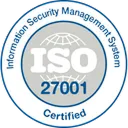As someone who spent over 12 years in accounting and finance, I was fortunate enough to work on so many different things from general accounting to financial planning and analysis, multiple acquisitions, external reporting, and even an IPO. Over that time, one of the most influential roles I held was managing an accounts receivable (“A/R”) team. Not only did this role inspire me to build Quickly to solve a major problem (working capital and cash flow challenges for businesses everywhere), it was a front-row seat to understanding just how critical A/R is to business health.
At its best, effective A/R management isn’t just about collecting money—it’s about enabling growth, managing risk, and empowering smart financial decisions. This article outlines best practices that go beyond the basics and are designed for finance leaders, accountants, and operations executives aiming to build more strategic, resilient receivables processes.
Key Takeaways
- Strong A/R practices accelerate cash flow and reduce risk.
- Accurate and timely invoicing reduces DSO and improves predictability.
- Automation and tech integrations enable scale and reduce friction.
- Strategic credit management and data-driven decisions strengthen client relationships and financial stability.
Best Practices for Managing Accounts Receivable
Though there’s no one-size-fits-all approach to optimizing your accounts receivable strategy, there are a few tried-and-true practices that can benefit most businesses. I’ve split these into 4 core elements; Pre-sale, Invoicing, Post Sale, and Embracing Innovation.
Pre-Sale
1. Build a Strong Credit Evaluation Process
Good A/R starts before the invoice. Extending credit should be strategic—not automatic.
Best practices:
- Standardize credit applications and build a scorecard.
- Go beyond references—use credit bureaus (like Equifax or Dun & Bradstreet) and request financials when appropriate.
- Calculate liquidity and payment metrics (e.g., current ratio, DPO).
- Reassess credit limits regularly as customer conditions change.
Why it matters: Well-informed credit decisions reduce exposure to bad debt and help finance leaders forecast with greater confidence.
2. Learn Your Clients' Invoice Process
Every client has its own internal payment structure. Understanding it is critical to timely payments.
What to clarify:
- Who approves invoices and what documentation they require.
- Submission format and portal specifics.
- Review cycles and cutoff periods.
Why it matters: Aligning with a client’s process avoids unnecessary delays, disputes, or rejections—especially in enterprise accounts.
Invoicing
3. Invoice Fast and Accurately
Once your deliverables are complete, invoice immediately. Delays only prolong the payment cycle.
Best practices:
- Set up automated invoicing tied to delivery or milestones.
- Double-check rates, quantities, and payment terms.
- Attach supporting documentation like POs, schedule of values, timesheets, or delivery receipts.
Why it matters: Clean, timely invoicing is the fastest way to accelerate cash flow and reduce DSO.
4. Ask for Pre-approval
Especially on large invoices or milestone payments, getting sign-off from the purchaser before submission can prevent friction.
How to implement:
- Share draft invoices or summaries for review.
- Log confirmations for auditability.
- Use selectively—on complex or high-value accounts.
Why it matters: A simple “Looks good” can save weeks of follow-up later.
Post-Sale
5. Follow Up With Intention
Reminders shouldn’t be robotic—they should reflect professionalism and partnership.
Tips for effective follow-up:
- Establish a communication cadence aligned to due dates.
- Use clear, friendly language.
- Enable your team with templates and escalation paths.
Why it matters: Personalized follow-up improves client responsiveness and preserves relationships.
6. Enhance Your Dispute Resolution Process
Disputes can derail your cash flow if not managed proactively.
How to get ahead:
- Create clear workflows for issue escalation.
- Track and analyze dispute trends.
- Train teams in de-escalation and resolution techniques.
Why it matters: Quick resolution improves recovery timelines and strengthens your reputation.
Embracing Innovation
7. Leverage Automation and Data
Automation is no longer a luxury—it’s table stakes for scale.
Where to focus:
- Automate invoice creation, reminders, and reconciliation.
- Use real-time dashboards to track aging, DSO, and dispute volume.
- Build predictive models based on payment behavior and trends.
Why it matters: Tech-enabled A/R lets you scale without growing headcount—and gives execs the visibility needed for strategic planning.
8. Tailor Payment Terms Strategically
Not all clients should have the same terms. Use data to drive flexibility.
Ideas to implement:
- Offer early payment discounts. Or better yet, use Quickly!
- Require partial prepayment for new or high-risk clients.
- Adjust terms based on payment history and customer lifecycle stage.
Why it matters: Smart terms balance client needs with risk mitigation and cash flow optimization.
Conclusion
Accounts receivable is a strategic function—one that impacts every corner of your business. By implementing rigorous credit policies, optimizing invoicing workflows, embracing technology, and leveraging data, finance leaders can turn A/R from a back-office task into a competitive advantage. The goal isn’t just to get paid—it’s to get paid smarter, faster, and more predictably.
“It took minutes to set up. Our contractors love the freedom...”
Meshal Alshammari, CEO @ Enviro Painting






